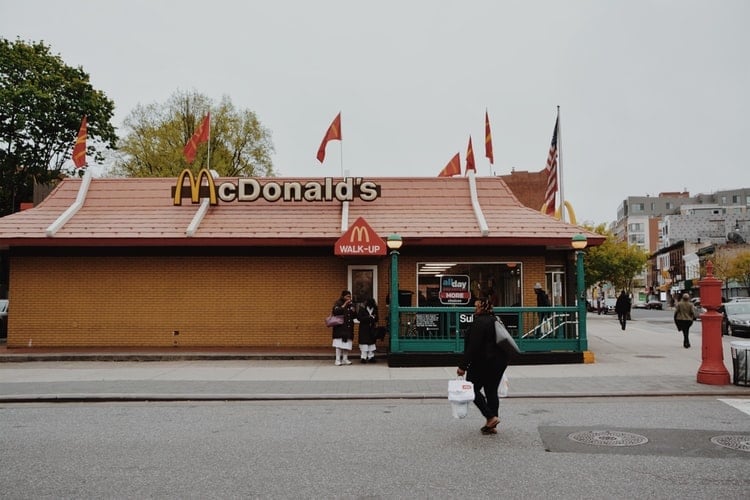Localization is key for all brands that want to go global. But quality cultural and language localization projects require an enormous amount of research, a high level of cultural sensitivity and vast market knowledge.
Over the last five years, I’ve worked as a linguist, localizer and project manager in France, Ireland and now Spain. Working in different countries and cultural contexts has helped me understand the most critical issues involved in localization—and the importance of localization in linguistics.
Most marketers know that you can’t just translate your brand’s message from one language to another without thinking about the channel it’s placed on, the nuances contained in every word, and even the symbols and colors that go with it.
But that’s easier said than done. How can you make sure that you’re getting the right message across in each market?
Here are a few simple ways to ensure a quality localization—even if you don’t speak every language you’re publishing in.
See also: Localization strategy: Your guide to engaging a global audience

How to tell if you’ve received a quality language localization
Let’s say you need to adapt your U.S. brand message for the French market. You’ve hired someone to localize your content, and you want to check that they’ve done a good job. But you don’t speak French, and you’re not familiar with French culture. How can you ensure that the language and cultural localization is up to your standards?
Here’s a checklist of five things you should look for to see if the content has been well adapted to the cultural, linguistic and societal norms of the target audience.
See also: How to localize your website and why it matters
1. Make sure expressions and cultural references aren’t directly translated
In linguistic localization, you should never put the cart before the bulls. Wait, what? Shouldn’t it be “put the cart before the horse”? In English, yes—and that’s because back in the 16th century, horses were commonly used in agricultural activities (like pulling carts). But in France, bulls were used for the same purpose, which is reflected in the French version of this saying (directly translated above).
Of course, cultural references go far beyond figures of speech. In general, you should assume that any cultural concepts that seem natural to you are likely different for people in other countries, and adjust your content accordingly.
For example, let’s say you want to create a character to help you sell your new sock collection. It’s a typical 40-year-old man who loves wearing your socks to go running. His name is John Smith: a nondescript, typical English name.
If you’re advertising in a non English-speaking country, you’ll need to change that name to communicate the same concept. In France, you could call him Pierre Dupont: a super common French name that essentially tells your audience that he’s an average guy.
This strategy should also be applied to pop culture; if your campaign refers to a critically acclaimed film or TV series from last year, make sure it was also popular in the target country.
“If you have a blog post with certain examples that might have an impact in one market, you need to find a similar example in another market that can convey the same message.”
– Kyler Canastra, VeraContent’s head of business development
Localization tip #1
Localizing content means understanding and adapting cultural references. If any expressions or idioms were used in the source text, make sure your language localization team has changed them to something appropriate for the market. Also make sure to adapt generic character names into the target language, and check pop culture references to ensure they’re relevant.
See also: US vs. German marketing content: Why localization is key
2. Confirm that your visuals and color schemes match local sensibilities
Communication isn’t only about words. It can involve gestures, signs, expressions and even colors.
For example, in Europe, Latin America and Northern America, mourning is symbolized by black, whereas in India, it’s represented by white—a somber color that’s associated with death. So you might want to reconsider before building your whole campaign around the bright white hue of those socks, if you’re planning on selling them in Mumbai or New Delhi.
A real-life example of localizing color schemes can be found in one of the world’s largest fast food chains. McDonald’s has a distinctive red and yellow image in most regions, but in Europe it has shifted to yellow and green to promote a more eco-friendly image.
“Images tell a story, and they can tell a different story in different markets—you need to make them resonate with your users.”
Anne-Sophie Delafosse, localization manager at Deliveroo
Localization tip #2
Images and colors can be just as important as language when it comes to cultural localization. For every localized project, make sure to ask your localization team about any visual aspects or colors that might have not have the intended meaning in the target market.


See also: Content marketing in Spain vs. the US: 9 key differences
3. Make sure the tone is appropriate for your audience
When people interact, they adjust their language according to the person in front of them. A quality cultural localization has to do this as well.
Nobody speaks the same way to their parents as they do to their siblings, or colleagues, or cat. Although in English we only have one form of the second person singular (“you”), other languages—and regional dialects—have many different options for addressing someone directly.
For example, Spanish speakers might use tú, usted, vosotros, ustedes or vos, depending on both the country and the relationship between the speakers. There’s even a word for the action of referring to someone with the informal version of “you”: tutear.
Weirdly enough, I feel very comfortable using the informal “you” with strangers when I’m in Spain, but almost offended when somebody I don’t know addresses me with the equivalent form in French. In France, it’s considered very rude to assume you can talk to someone in an informal way without their consent.
If you want to create an impactful content campaign, you’ll need to consider not only the language, but also the regional dialect and the target audience within each country. This is where professional marketing translators and transcreation agencies come in handy; as native speakers and experts, they know the most appropriate tone and linguistic localization choices for their own countries and cultures.
If you make the call yourself without this kind of insider knowledge, it could cause your whole campaign to fail. You can try to sell your socks in Japan without consulting a native speaker—but will you be able to choose the appropriate degree of grammatical formality from the many levels that exist in Japanese?
“For example, when marketing to an Egyptian audience, you have to use direct communication and treat the audience as though they are well-educated and understand what you want to do. Make sure that you’re not trying to trick them.”
Nermeen Habashy, head of content and SEO at B.TECH
Localization tip #3
Different languages and dialects involve specific rules that may not be obvious to non-native speakers. These subtle variations in grammar and tone can make a huge difference in the message conveyed.
That’s why it’s so important to provide your localization team with a clear brief, so that the linguist adapting the text truly understands the best way to convey the message and what level of formality is appropriate in the context.
See also: 12 multilingual social media tips that really work
4. Double check grammar, style and punctuation
Each language has its set of rules for spelling, punctuation, symbols and even formatting. If you don’t use them properly, your content will look very strange to native speakers—even if they don’t consciously realize why.
To see what I mean, take a look at this poorly localized text:
NEW Olympic Socks ! Each pair only 5 € ! Please call 666 123 456
The English itself is correct. The information seems to be complete. But to an American audience, this campaign looks suspicious for a few simple reasons:
- There are spaces before the exclamation points.
- The price hasn’t been converted to U.S. dollars.
- The currency symbol is placed after the amount.
- The phone number is in an unfamiliar format.
These things may seem small, but it’s absolutely vital to adapt every detail in order to gain your target audience’s trust. In this case, that would also include setting up a regional phone number so that people in the U.S. can actually call it (instead of getting an error message for an international number).
Here’s what the localized text should look like:
NEW Olympic Socks! Each pair only $7! Please call +1-888-123-4567
Localization tip #4:
A quality localization should always take into account rules regarding grammar, style and punctuation. Even the smallest details can make or break your content campaign. It’s always ideal to have a final proofread done by someone who hasn’t seen the source text, so they can look at it with fresh eyes and ensure it’s in a format that will make sense to the target audience. It helps to set up a localization quality framework to follow for each language that caters to these types of rules.
See also: Top 8 localization tools to optimize all your digital content
5. Publish in the right place
People around the world have vastly different ways of life and habits, all of which must be taken into account when localizing content.
For example, a huge roadside billboard might help you sell your new collection of socks in the middle of the United States, but you’ll have to reconsider the format if you want Europeans to buy your product. Why? Because people don’t drive as much here, at least not in big cities.
In most European capitals, your ads would be more likely to catch the public’s eye on medium-sized posters in subways or on sidewalks. Part of the reason is that these cities tend to be much more pedestrian friendly, while much of the U.S. was designed for driving on large roads and highways.
This logic also applies to displaying your content online. For example, the leading social media platform in France is YouTube, while the leading platform in Germany is Facebook. But this information alone isn’t enough to determine which platform to use. It also depends on your brand message, the specific campaign, your audience’s age group and more. And once you choose a channel, you have to ensure that your content is adapted to its format.
See also: International audience research methods: How to reach new markets effectively
“Localized marketing is black and white—not gray. Whatever you make has to be relevant to your audience, market and channels. If it isn’t, then it doesn’t work.”
Nadine Leighton, marketing director at Metapraxis
Localization tip #5:
Where and how you display your content matters. A quality localization takes into account the local audience’s lifestyle and habits in order to find the right channel to place a message. Ask yourself: Where do people spend most of their time, both in the real world and online? Decide on the right channels before localizing any texts.


Quality language localization is key to success
Determining if the localization process has been performed well isn’t as complicated as you might think. You don’t even need to speak the language of your target audience (although it certainly helps).
What’s important to remember is that cultural differences matter when marketing products in other parts of the world, and that each region has its own way of life and cultural context.
Your localization team—whether in-house or at an agency—should be made up of expert linguists who know their language and culture better than anyone else. This is the true key to a great localization process.
However, as a marketer, you can feel more confident in your localizations by providing clear briefings in advance and checking to ensure that cultural sensitivities have been accounted for.
Next time you receive a piece of localized content, follow these simple steps to ensure it meets the highest quality standards. It will undoubtedly help you connect better with your audience, and gain trust for your brand in international markets.
Want to learn more about how to ensure a quality language localization?
Check out our interactive worksheet to adapt your content strategy to local markets:

Get your free guide by filling in the form below!
Check out our interviews with localization experts:
- Cater to global audiences – Deliveroo’s Adam Spawton-Rice & Anne-Sophie Delafosse
- Local languages foster connection – Jonathan Kaplinsky, EMEA marketing manager at Hasbro
- Build trust through localization – Jordanna Ber, head of localization at Rover
- Expert tips to launch successful global marketing campaigns

